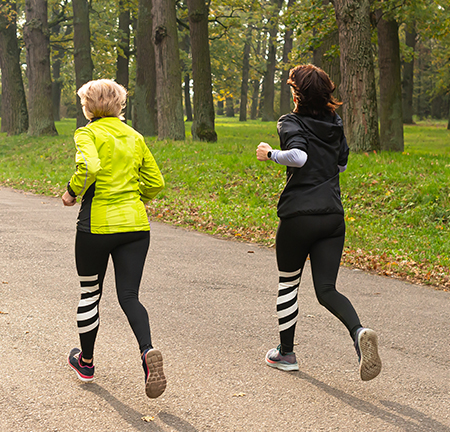Every great story deserves an action scene.
 Your body was made to move.
Your body was made to move.
Life is better when you’re in shape. I’m not talking about cheese-grater abs or bouncing a quarter off your butt. Vanity goals are for kids.
I’m talking about taking care of that magnificent machine – your body – that carries around your thoughts all day. I’m talking about that feeling of sweaty accomplishment after a good, greasy workout. You stand taller. Feel energized. Blissed out. Sexy. Ready to take on whatever life hands you. Working out makes you feel like the superhero you are.
You remember that feeling, right?
We’ve all had our fitness phases. That month when you and your co-workers played softball at lunch. That spring, you got into cardio kickboxing with that cute instructor whose class you never missed. The vacation when you biked to the beach every morning to watch the sun rise.
You keep promising yourself you’ll get back to it, but life has a way of getting in the way. How long was that last phase? Six months ago? Two years? Need a little kick in the yoga pants?
 Try a Running Buddy session with me.
Try a Running Buddy session with me.
It’s just as it sounds. We meet in a place that ensures your privacy and is convenient for both of us – maybe the waterfront, a public park, or one of the thousands of scenic trails in the Garden State. We lace up our sneakers, do some light stretching, and get moving. No stress, no competition.
I match your pace. You may be surprised that your emotions surface more quickly when your body is engaged. I use the same therapeutic techniques as in a traditional setting. The same commitment to your comfort and privacy.
What’s more, we will also work together to develop some powerful, evidence-based strategies to maximize the benefits to your body and mind. In other words, while you are in motion, you will gain valuable motivational tools to make you more likely to work out regularly.
I know how important motivation can be.
My fitness took a hit during the pandemic. My workout routine consisted of doom-scrolling, climbing the walls, and worrying about everyone else. I knew that stepping away from my screen and breaking a sweat would immediately boost my mood.
I could quote from the mountains of research on the mental health benefits of exercise. Increased blood flow to the brain will improve creativity and problem-solving ability. Regular exercise will decrease production of cortisol, a stress hormone, and increase the body’s production of feel-good chemicals like dopamine and serotonin.
Knowing all that – feel better, look better, think better – I found it almost impossible to break free of the gravitational pull of my couch.
 And then…
And then…
One day, in desperation, I went out for a run. I felt uncharacteristically self-conscious. Was I doing it right? Would people think I was being chased? Everything, especially my knees, hurt – and I decided I wasn’t cut out for this sport.
I told an acquaintance of mine – a marathoner – about my painful and awkward attempt, and she suggested I go for a run with her. I didn’t yet know that many runners are evangelists for the cause. I didn’t expect a little professional guidance to make all the difference.
I’d been telling myself a story about my bad knees, flat feet, and weak ankles. My marathoner acquaintance showed me that this was more about form and footwear. And something about being in the open air and challenging ourselves together made me feel freer. My self-consciousness melted away in miles and sweat. We talked about things we’d never discussed before. My marathoner acquaintance became a friend. She told me that running was like therapy for her. And that gave me an idea…
 Why not combine running with therapy?
Why not combine running with therapy?
I started doing some research. Turns out I hadn’t invented the concept. Freud conducted sessions while walking and hiking. When I started seeing clients on the trail, I saw that the one-two punch of movement and therapy was not simple addition; the impact was exponential.
For instance, movement stimulates the brain and brings new things into awareness. When we are on the move, I find my clients go deeper and faster. They are more inclined to broach difficult topics while their brains are buzzing away on solutions.
Research has demonstrated that ruminative and negative thoughts decrease in nature. And the bilateral movements of running are scientifically proven to help you process trauma and decrease depression and anxiety. You will feel increased self-esteem, process difficult emotions more easily, kick your psychological blockers to the curb, and let go of the things that no longer serve you.
I treat you, the whole person.
As a therapist, I believe the mind and body are interconnected. If it turns out that we are a good therapeutic match, health and movement will be an integral part of your treatment. It will make a huge difference, I promise you.
But you know that already. So, let’s get started together.

